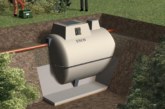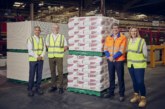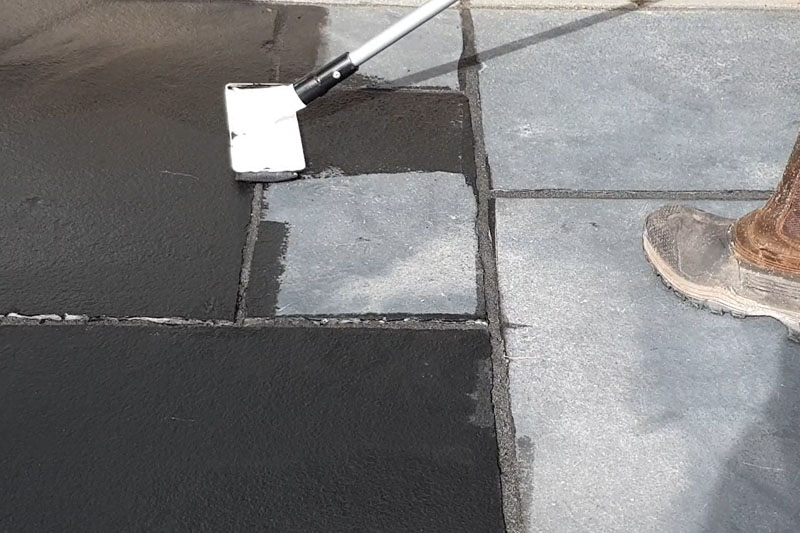
Mark Atkins, Technical Director at LTP, examines the additional considerations associated with the rise in popularity of porcelain paving and outlines a number of link selling opportunities for merchants.
It has been pretty incredible to see the rise of the porcelain paving this year as domestic and contract customers have really embraced these new tiles. They do bring lots of benefits, in terms of their many practical features with their durability and non-absorbency both big benefits outdoors, whilst the new textured finishes also make them a lot more practical.
However, like all new trends, the introduction of porcelain paving bring new challenges.
The main issues relate to residues. When fitters are using a brush-in jointing compound, it is very important to keep the surface of these tiles as wet as possible so that any residue can be easily wiped away. Porcelain tiles can dry out quite quickly, causing an element of the resin within the compound to cling to the surface. The textured nature of most external porcelains also makes it more difficult to apply grouts and jointing compounds.
Keeping the surface wetter for longer helps to improve and increase the working time of grouts and jointing compounds — and greatly reduces the possibility of grout and resin staining. Dried-on jointing compound can be difficult to remove and the residue left can ruin an installation.
In response, LTP has developed two new products for unpolished porcelain. Our new Porcelain Tile Protector is applied before grouting and, once it has dried, it helps with cement and jointing compound release. This water-based treatment is designed to protect tiles from staining, and allow the easy removal of residues of cement-based grouts and two-part resin based jointing compounds, as well as stubborn organic matter.
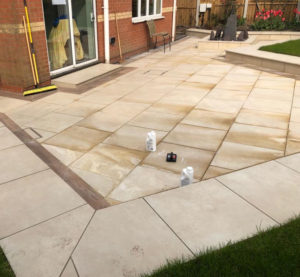
Suitable for textured wood and stone-effect patios, the product creates a barrier, without forming a film or altering appearance. This helps to improve and increase the working time of grouts and jointing compounds — and greatly reduces the risk of cement and resin staining.
The new protector is easy to apply and can be done with a spray, roller or brush. Once residues have been removed — and the surface is dry — a further coat can be applied to the tiles and joints to help assist with future cleaning and aftercare. LTP Porcelain Tile Protector is manufactured by the firm in the UK and is available in one litre and five litre bottles.
For surfaces that have been stained, the company’s new acid replacement Cement, Grout and Salt Residue Remover can also turn back the clock for cement stains. The new solution replaces conventional acids normally used to remove cement and grout residues, and can be used on all types of tile and natural stone surfaces, except those with a polished finish.
This means it can be safely applied to unpolished acid-sensitive surfaces, including limestone and travertine. As well as removing new and existing building residues, the new treatment also disperses rising salt residues caused by issues including substrate moisture and spot fixing.
Developed and manufactured in the UK, the new Residue Remover can be used outside (and indoors) on porcelain, glazed ceramics, quarry tiles and terracotta, slate, brick, sandstone, granite and unpolished natural stone. A diluted application removes mild residue within 30 minutes, whilst a neat application and agitation gives instant results.
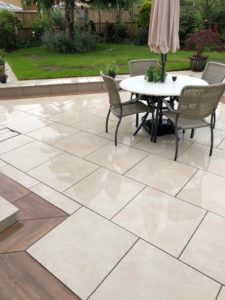
Deposits are then removed and surfaces rinsed with clean water. Part of LTP’s ‘clean-seal-maintain’ range, it is available in one litre and five litre cartons and gives coverage of approx. 5-25m2 per litre.
Other complementary treatments include LTP Grimex — a heavy-duty intensive cleaner that can be used before application of the Protector — and LTP Porcelain Floor Tile Cleaner, which is a highly effective no-rinse aftercare cleaner for indoor and outdoor spaces.
In addition to new developments in the product range, aftercare education is also very important. We’re routinely recommending that customers don’t stop at the bi-folds when they’re cleaning porcelain that’s installed from inside to out. They need to keep going and mop the patio too! This greatly reduces the need for intensive cleaning outdoors — although we also have various eco-friendly options, should the need arise
Elsewhere in the range, if dark natural stone and artificial stone surfaces have been installed, then tradespeople should turn to LTP’s new outdoor sealer and restorer, Blackstone. Available in 250ml, one litre and five litre units, its water-based, impregnating formulation restores the appearance of faded limestone, marble, slate and concrete.
The solution can be applied in multiple coats until the desired colour effect is achieved — from grey to ebony. On honed surfaces, it is applied with a cloth or sealant applicator and, on rough cut/textured surfaces, with a foam roller or paintbrush. It is then ‘cut back’ to remove excess. Surfaces can be walked on four hours after the final application and can be returned to ‘heavy use’ after 24 hours.







